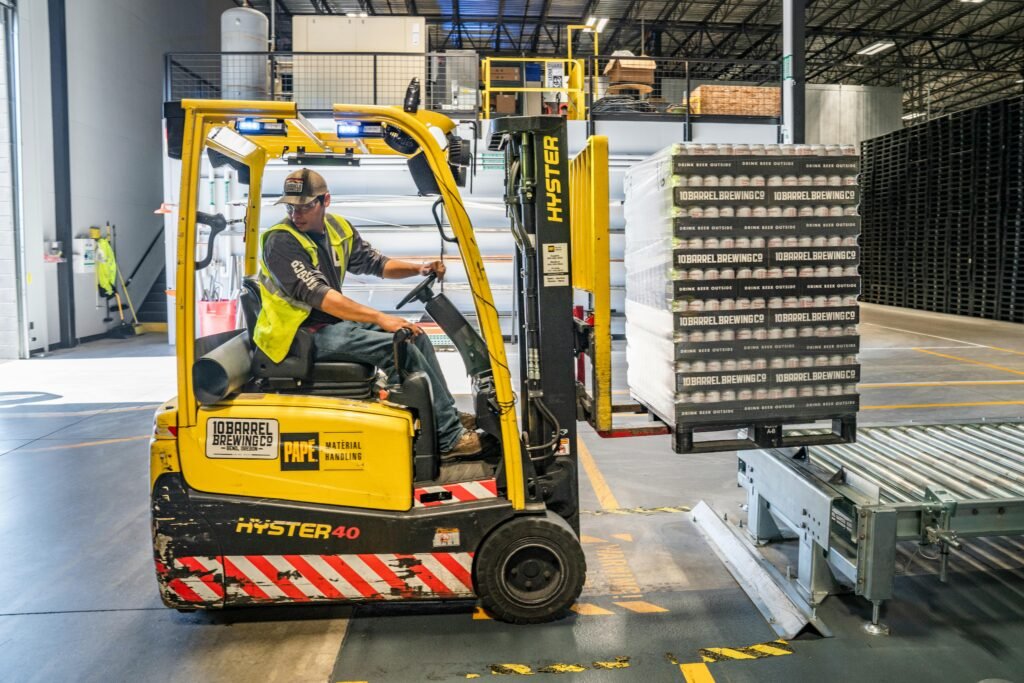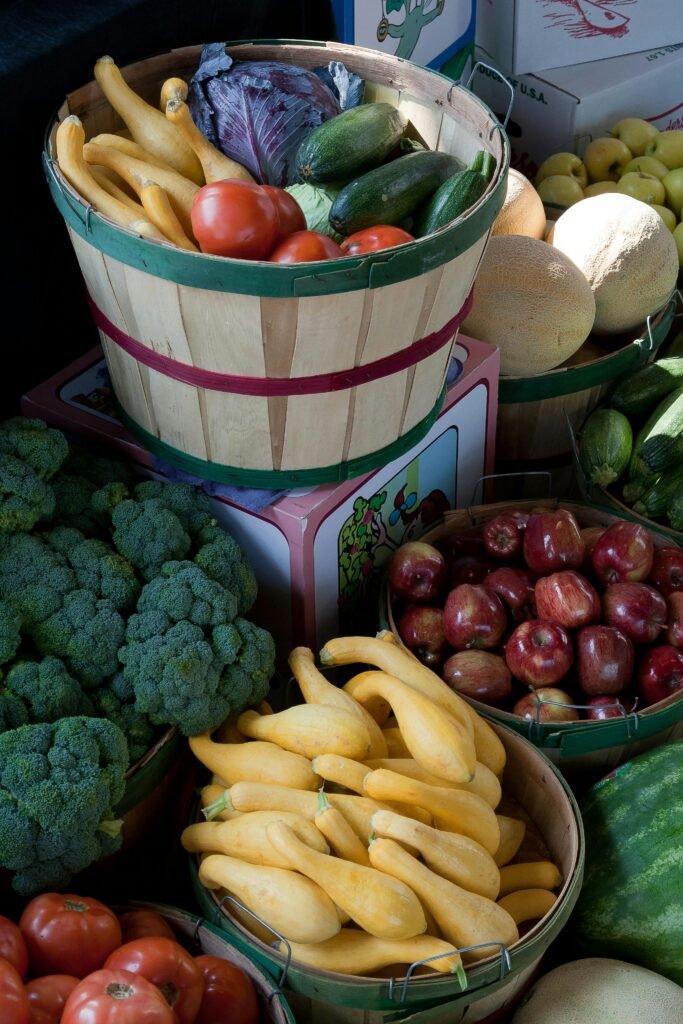Are you in need of wooden crates for storage or transportation purposes, but are unsure of what size or capacity to choose? Look no further! This article will provide you with a comprehensive exploration of the various size and capacity options available for wooden crates. Whether you need crates for residential or commercial use, we’ve got you covered. Discover the perfect crate that meets your specifications and ensures the safe and efficient handling of your goods.
Standard sizes
Wooden crates come in a variety of standard sizes to suit different needs and purposes. Small wooden crates are perfect for storing and organizing small items, such as tools, accessories, or collectibles. They are also ideal for packaging and shipping small products. Medium wooden crates offer a bit more space and are commonly used for transporting medium-sized items or for storing larger quantities of goods. Large wooden crates, on the other hand, are designed to accommodate bulkier or more substantial items, making them ideal for heavy-duty storage or transportation.
Custom sizes
While standard sizes may work for many applications, there are times when custom-sized wooden crates are necessary. Custom sizes offer several benefits, such as maximizing storage space or ensuring a perfect fit for unique items. It allows you to have crates that are tailor-made to meet your specific requirements, whether it’s for shipping, storage, or display purposes.
Benefits of custom sizes
The primary advantage of opting for custom-sized wooden crates is the ability to optimize space utilization. By designing crates specifically for your items, you can minimize wasted space and maximize the number of items that can fit inside each crate. This can be particularly beneficial when it comes to shipping, as it allows you to pack more efficiently, potentially reducing shipping costs. Additionally, custom-sized crates can provide better protection for delicate or irregularly shaped items, ensuring they are securely held in place during transportation.
Factors to consider for custom sizes
When considering custom-sized wooden crates, there are a few factors to keep in mind. Firstly, you need to assess the dimensions of the items you intend to store or transport. This will help you determine the optimal height, width, and depth of the crates. Additionally, you should consider any specific weight requirements, as well as any special features you may need, such as handles or stacking capabilities. Finally, it is important to consider any potential growth or changes in your inventory that may require adjustments to the crate sizes in the future.
How to order custom-sized wooden crates
Ordering custom-sized wooden crates is a straightforward process. You can start by getting in touch with a reputable crate manufacturer or supplier who specializes in customization. Provide them with the specifications for your desired crate sizes, including the dimensions, weight capacity, and any additional features you require. The manufacturer will then work closely with you to design the crates to your exact specifications. Once the design is finalized, the manufacturer will proceed with the production and delivery of your custom-sized wooden crates.
Weight capacity
The weight capacity of wooden crates is a crucial consideration, especially when it comes to transportation or storage of heavy items. It is essential to ensure that the crates you choose can safely hold the weight of the items they will carry or support.
Importance of weight capacity
Choosing wooden crates with the appropriate weight capacity is essential for maintaining the integrity of the items being transported or stored. Insufficient weight capacity can result in crate failure, leading to damage to the goods or even accidents during transportation. On the other hand, selecting crates with excessive weight capacity may be unnecessary and potentially add unnecessary costs. Therefore, it is crucial to determine the weight requirements accurately.
Determining weight capacity
To determine the weight capacity needed for your wooden crates, you must accurately assess the weight of the items they will carry or support. Take into account the maximum weight of each individual item and the number of items that will be placed in each crate. It is also important to consider any potential impact or stress that may occur during transportation or handling. Once you have calculated the total weight, it is recommended to choose wooden crates with a weight capacity that exceeds this calculated value to ensure safety and durability.

This image is property of images.pexels.com.
Standard weight capacity options
Wooden crates typically come with standard weight capacity options that can help guide your selection process. These options may range from light-duty, suitable for small or lightweight items, to heavy-duty, capable of holding substantial weights. Be sure to check the weight capacity specifications provided by the crate manufacturer or supplier to ensure the chosen crates meet your unique requirements.
Specialty crates
In addition to standard sizes, wooden crates also come in various specialty options designed for specific purposes or industries. These specialized crates offer enhanced features and functionalities tailored to specific needs.
Crates for fragile items
Crates designed for fragile items are essential for protecting delicate or easily breakable goods during transportation or storage. These crates typically feature additional padding or cushioning materials to provide extra protection against shocks and vibrations. They may also include internal compartments or dividers to prevent items from shifting or colliding with each other. When transporting fragile items, it is crucial to choose crates specifically designed for this purpose to minimize the risk of damage.
Crates for heavy-duty items
For bulky or heavy items, specialized heavy-duty wooden crates are the go-to option. These crates are built with reinforced materials and construction methods to withstand the weight and potential stress associated with the transportation or storage of heavy items. Heavy-duty crates often have thicker walls, reinforced corners, and secure latches or closures. By using these crates, you can be confident that your heavy items are well-protected and securely contained.
Crates for specialized industries
Certain industries have unique requirements when it comes to packaging and transporting goods. Wooden crates are invaluable in meeting these specific needs. For example, the food and beverage industry may require crates specifically designed to meet hygiene standards or maintain temperature control. The automotive industry may need crates tailored to fit specific vehicle parts securely. Other industries, such as pharmaceuticals or electronics, may have specific requirements for the protection of sensitive or high-value products. By utilizing specialized wooden crates, these industries can ensure the safe and efficient transportation and storage of their goods.
Stackability and nesting
When it comes to optimizing storage space and transportation efficiency, considering the stackability and nesting capabilities of wooden crates is essential.
Benefits of stackable crates
Stackable crates allow you to make the most out of your available vertical space. By safely stacking crates one on top of another, you can effectively utilize the height of your storage area or vehicle. This is particularly advantageous when space is limited, as it allows you to store or transport more items without requiring additional floor area. Stackable crates are designed to have stable bases and interlocking features, ensuring they remain secure when stacked.
Benefits of nesting crates
On the other hand, nesting crates are designed to fit snugly inside one another when empty. This nesting feature allows you to save space during storage and transportation when the crates are not in use. By reducing the overall footprint of the crates, it becomes possible to store or transport a higher quantity of empty crates in a smaller area. Nesting crates often have lids or covers that can securely seal the stack, providing additional protection for the contents.

This image is property of images.pexels.com.
Considerations for stackability and nesting
When considering stackable or nesting crates, it is important to assess your specific needs and limitations. Stackability requires sufficient headroom to accommodate the stacked crates without jeopardizing overhead clearance. Additionally, the weight-bearing capacity of the crates and the stability of the stacking arrangement should be evaluated to ensure safety. For nesting crates, it is important to consider the space needed to store the empty crates when they are nested. Assessing these factors will help you determine whether stackable or nesting crates are the best option for your storage or transportation requirements.
Common applications
Wooden crates have a wide range of applications across various industries and settings. Understanding the common uses of wooden crates can help you determine the most suitable options for your specific needs.
Shipping and transportation
One of the most common applications of wooden crates is for shipping and transportation purposes. Wooden crates provide a sturdy and protective packaging solution for goods being transported over long distances or through various modes of transportation. Whether it’s shipping products internationally or transporting goods locally, wooden crates offer durability and reliability, ensuring that your items arrive safely at their destination.
Storage and organization
Wooden crates are also widely used for storage and organization purposes. Their robust construction makes them suitable for handling heavy or bulky items, making them ideal for warehouses, garages, or other storage facilities. Wooden crates can be stacked or nested to efficiently utilize space and keep items organized. They are often used in retail environments, workshops, or homes to store tools, equipment, or other belongings in a neat and tidy manner.
Display and decor
In addition to their practical applications, wooden crates also offer aesthetic appeal and can be used for display and decor purposes. Many businesses and individuals use wooden crates to create rustic or vintage-inspired displays in retail stores, events, or homes. With a little creativity and imagination, wooden crates can be transformed into stylish shelves, flower planters, or even coffee tables. They add a touch of charm and character to any space while providing functional storage or display options.
Environmental considerations
As sustainability and eco-friendliness become increasingly important, it’s crucial to consider the environmental impact of the materials we use. Wooden crates, when sourced and treated responsibly, offer several environmentally-friendly options.
Sustainable sourcing of wood
To minimize the environmental impact, it is important to choose wooden crates made from sustainably sourced wood. Look for crates made from certified sustainable forestry practices, such as those certified by the Forest Stewardship Council (FSC) or other recognized organizations. These certifications ensure that the wood used in the crates comes from responsibly managed forests, where trees are replanted, and biodiversity is protected.
Eco-friendly treatment options
Wooden crates can be treated with various chemicals to enhance their durability and resistance to pests or moisture. However, some of these treatments may have negative environmental effects. To mitigate this, opt for crates treated with eco-friendly alternatives, such as water-based or non-toxic treatments. These options provide protection while minimizing the potential harm to the environment. It is important to inquire about the treatment options available and choose crates that align with your eco-friendly values.

This image is property of images.pexels.com.
Recycling and repurposing wooden crates
Wooden crates have the advantage of being reusable and recyclable. Instead of disposing of them after they have served their initial purpose, they can be repurposed or recycled. Wooden crates can be easily transformed into various DIY projects, such as shelves, furniture, or storage containers. Additionally, if the crates are damaged or no longer suitable for repurposing, they can be recycled into wood chips or other forms of biomass for energy production. By reusing or recycling wooden crates, you can further reduce your environmental footprint.
Decorative options
Wooden crates offer a blank canvas for adding decorative elements to suit your personal style or branding needs.
Staining and painting
One popular way to enhance the appearance of wooden crates is through staining or painting. Staining wood crates can give them a rich, natural look, highlighting the wood’s unique grain patterns. On the other hand, painting wooden crates provides an opportunity to add a splash of color or match them with existing decor. Whether you prefer a classic or vibrant look, staining or painting wooden crates can transform them into eye-catching pieces.
Engraving and branding
Engraving or branding wooden crates is another option for adding a personal touch or displaying your business logo. These techniques can be used to customize crates for specific events or purposes. Engraving can be done by using lasers or other tools to etch designs or text onto the wooden surface. Branding, on the other hand, involves adding your company’s logo or name through techniques like screen printing or embossing. By incorporating these personalized elements, wooden crates can become unique and distinctive.
Adding handles and hardware
For added functionality and convenience, you can consider adding handles or hardware to your wooden crates. Handles make it easier to lift and carry the crates, especially when they are loaded with heavy items. There are various handle designs available, ranging from built-in handles to attachable options, depending on your preferences. Additionally, you can enhance the functionality of wooden crates by attaching hardware such as hinges, clasps, or latches. These additions can make opening, closing, or securing the crates a breeze.
Maintenance and care
To ensure the longevity and performance of your wooden crates, proper maintenance and care are necessary.
Cleaning wooden crates
Regular cleaning is important to keep wooden crates in good condition. Remove any dirt, dust, or debris from the surface using a soft brush or cloth. For more thorough cleaning, you can use a mild detergent diluted in water. Gently scrub the crates and wipe them clean with a damp cloth. Avoid using harsh chemicals or abrasive cleaners, as they can damage the wood or its finish.
Preventing water damage
Wooden crates are susceptible to water damage, which can compromise their structural integrity. To prevent water damage, it is essential to keep the crates dry and avoid exposing them to excessive moisture. Store them in a dry, well-ventilated area, away from direct contact with water or damp surfaces. If the crates need to be stored outdoors or in wet environments, consider treating them with water-resistant sealants or coatings to provide an additional layer of protection.
Repairing and refinishing
Over time, wooden crates may experience wear and tear or damage. Fortunately, many minor issues can be easily repaired to extend their lifespan. Common repairs may include replacing broken slats, reinforcing loose joints, or fixing damaged finishes. For more extensive damage, refinishing the crates by sanding and applying a fresh coat of varnish or paint can revitalize their appearance and restore their functionality.
Cost considerations
While wooden crates offer numerous benefits, it is important to consider the cost implications and compare them with alternative packaging materials.
Factors affecting wooden crate costs
Several factors contribute to the overall cost of wooden crates. The size and complexity of customization, the type of wood used, and any additional features or treatments can impact the price. Specialty crates designed for unique purposes may also have a higher cost. It is essential to weigh the features and benefits of wooden crates against their cost to determine their cost-effectiveness for your specific needs.
Comparison with alternative packaging materials
When considering the cost of wooden crates, it is worth comparing them to alternative packaging materials. Materials such as plastic or metal may have different cost considerations, as well as their own advantages and disadvantages. While wooden crates offer eco-friendliness and a timeless aesthetic appeal, alternative materials may be better suited for specific applications. By evaluating the cost, durability, and environmental impact of different materials, you can make an informed decision based on your specific requirements.
Determining cost-effectiveness
To determine the cost-effectiveness of wooden crates, it is important to consider the long-term value they provide. Wooden crates offer durability, reusability, and customizability, which can contribute to cost savings in the long run. Additionally, their aesthetic appeal and branding capabilities may enhance the perceived value of your products or the overall presentation of your space. By weighing these factors against the initial investment, you can assess the overall cost-effectiveness of wooden crates for your needs.
In conclusion, wooden crates come in a variety of sizes, offering standard and custom options to suit different needs. They provide numerous benefits such as optimal space utilization, protection for fragile or heavy items, and versatility in various industries. Stackability and nesting features enhance storage and transportation efficiency. Wooden crates are commonly used for shipping, storage, organization, and decorative purposes. Considering environmental factors, decorative options, maintenance, and cost considerations will help you make informed decisions when choosing wooden crates. Whether you need standard, custom-sized, or specialty crates, wooden crates remain a reliable and versatile packaging solution.
